Colombia's Colonial Jewels & the Coffee Triangle
with pre-trip to Bolivia: La Paz & Lake Titicaca
January 31 - February 19, 2019
Part Two, Page Four: Cartagena
The city of Cartagena, known in the colonial era as Cartagena de Indias,
is a major port founded in 1533, located on the northern coast of
Colombia in the Caribbean region. It was strategically located between
the Magdalena and Sinú rivers and became the main port for trade
between Spain and its overseas empire, establishing its importance
by the early 1540s. During the colonial era it was a key port for the
export of Peruvian silver to Spain and for the import of enslaved Africans.

Toucan in the Bantu Hotel where we stayed in Old Town Cartagena
within the old walled city.
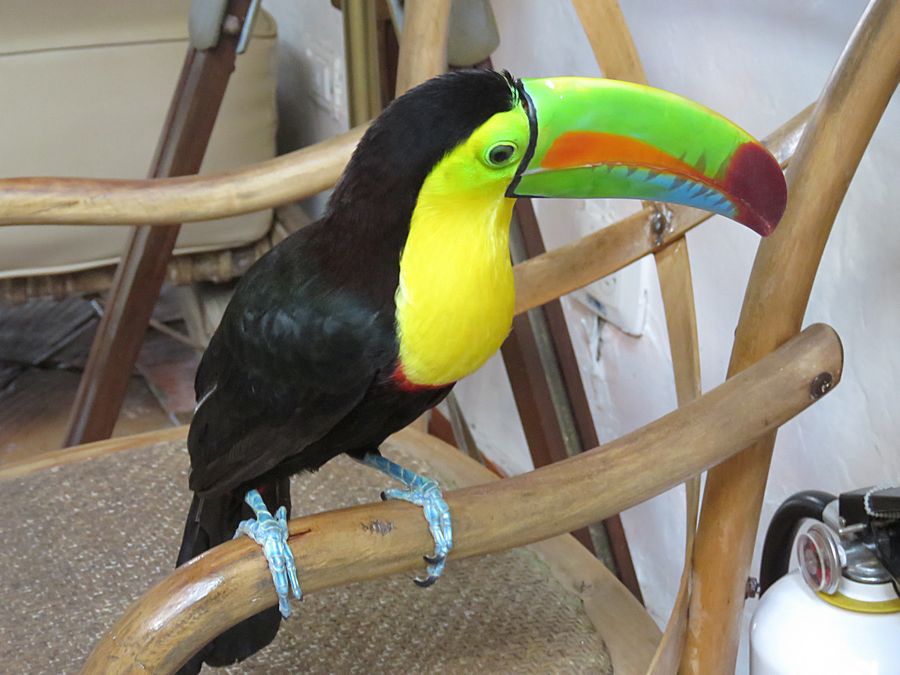

The hotel customer service rep. on duty decided
to show us how friendly the toucan could be.
People were very friendly to us in Colombia.
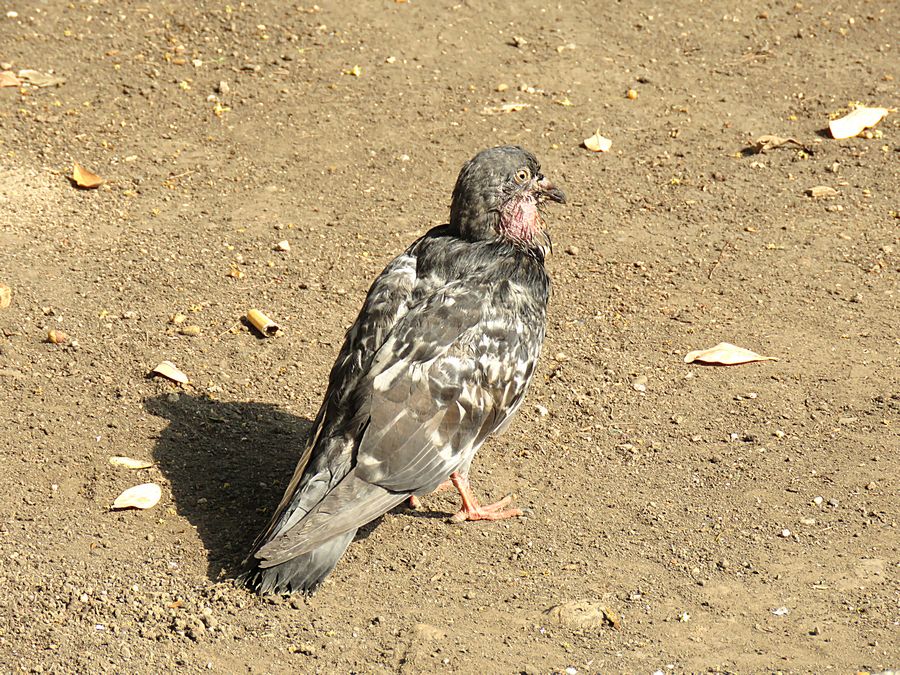
A pigeon near the hotel
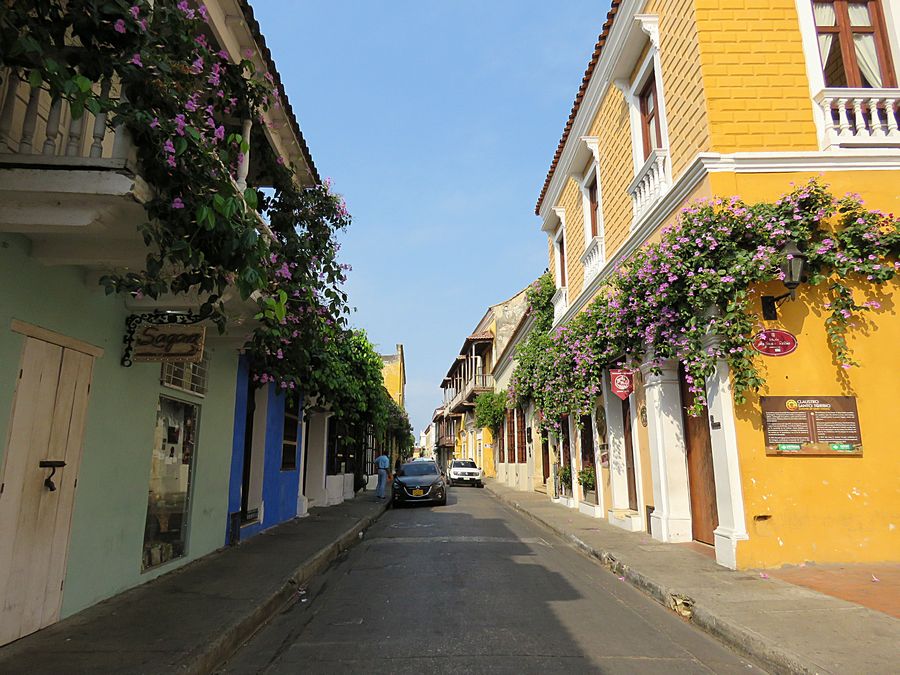
The walled city is perhaps the most popular
area of Cartagena in which to stay. Also
known as Old Town Cartagena, the walled city bustles with
activity day and night. It has colorful buildings, shaded plazas,
historic churches, colonial architecture.
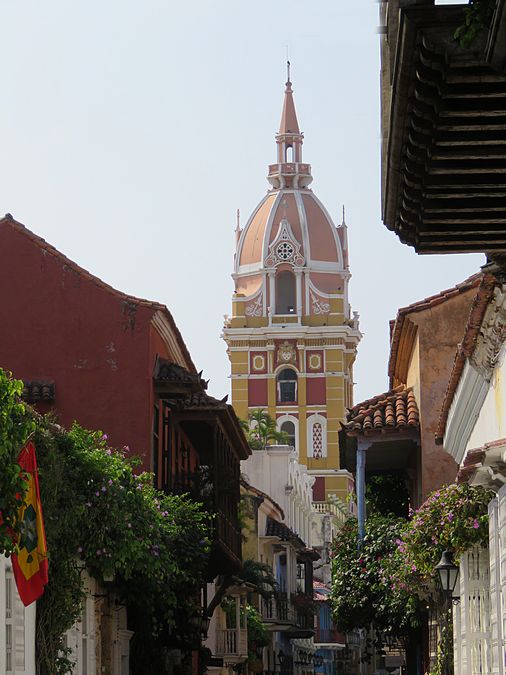
The Cathedral of Cartagena
Construction began in 1577, replacing a humble cathedral
of straw and reeds. In 1586, while the church was still under
construction, it was attacked by English privateer Francis Drake,
which caused severe damage and delayed its completion.
The building was finished in 1612.

Afro-Colombian women, dressed in the traditional
‘palenquera’ costume. You see many palenqueras,
in colorful dresses expertly balancing bowls
of tropical fruit on their heads. Today they make their living
mainly by posing for photos.
As background, in 1691, San Basilio
de Palenque was a small village near Cartagena ruled completely by
runaway African slaves. That year, the villaged declared the town's
independence from Spanish colonial powers, and the first free town of
the Americas was born, and so are the first free men and women
of the New World: Palenqueros and Palengueras. The women decided
to use what they had around them, abundant fruit. The Palenqueras
would pack hand-woven baskets full of ripe tropical fruits, put on their
traditional African dress and make the exhausting journey on foot to
Cartagena to sell the fruit to survive.
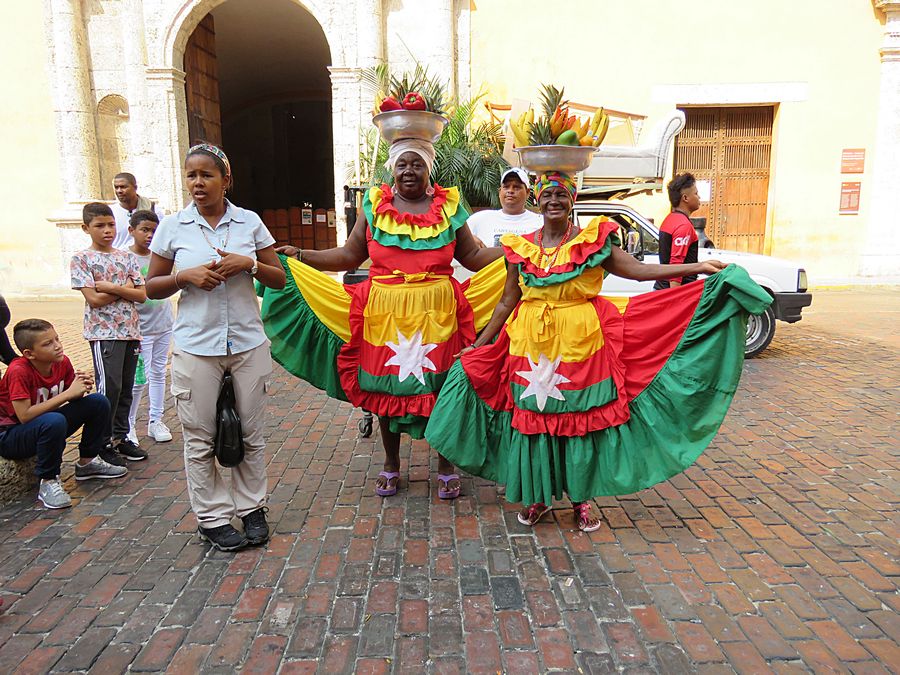
Our local guide with 2 palenqueras
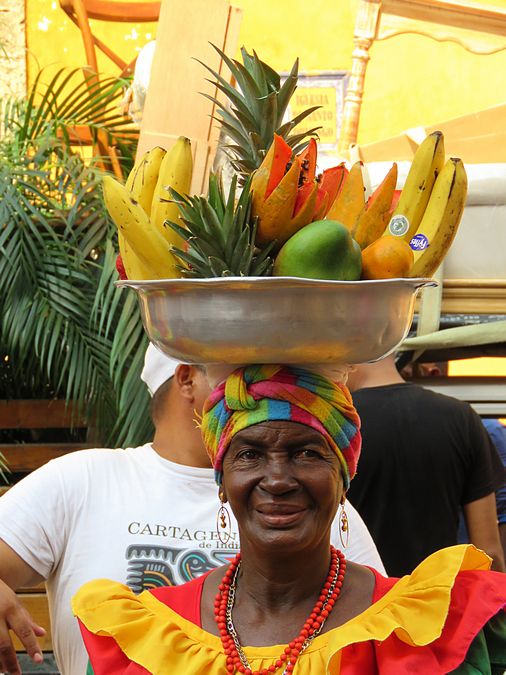
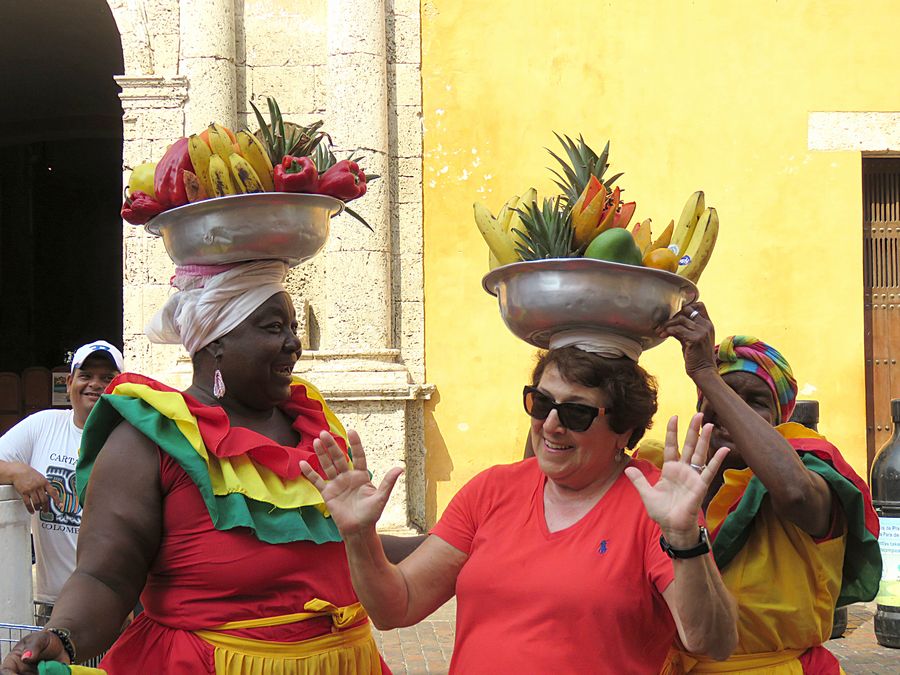
A couple of us tried to carry the fruit with little success,
unless you
want to count someone holding it on
for you as success. This is Fadwa from Chicago.

Our local guide in Cartagena. She told us the following day
how she had forgotten it was not one of her days where
she could drive in the city (a local regulation to reduce
traffic congestion). She was stopped by a policeman. She
casually told us how she did not have money on her, as she
had been robbed recently. Therefore, she had no money
to bribe the cop not to give her a ticket. So, she told him
she would turn around and go back home and asked him not
to give her a ticket, and he agreed.

Oldest church in Cartagena, Santo Domingo
Originally built in 1539

Tree filled courtyard area of San Pedro
Convent and Church
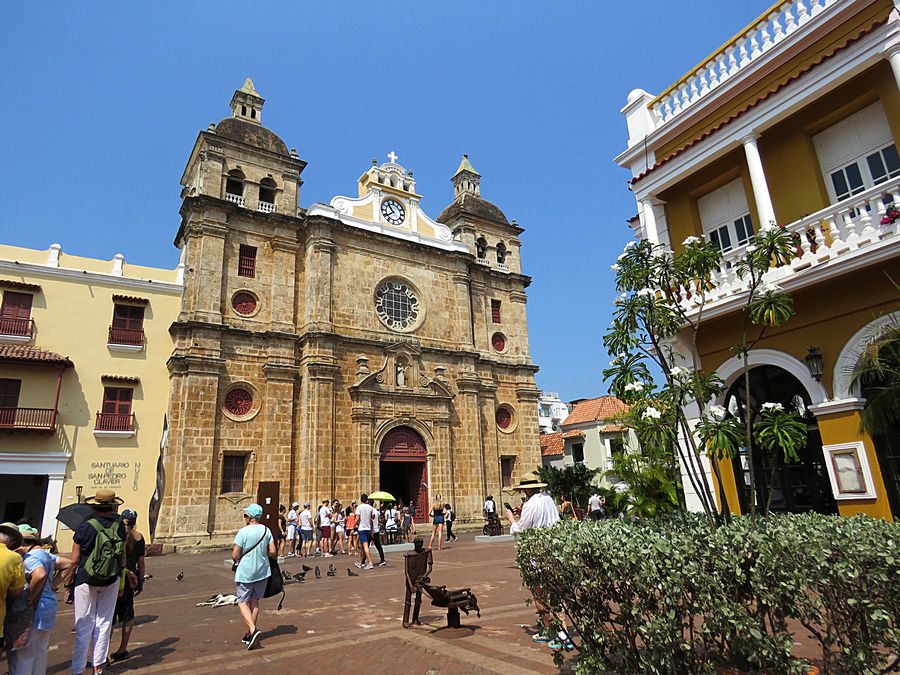
San Pedro Convent and Church founded
by Jesuits in early 17th century
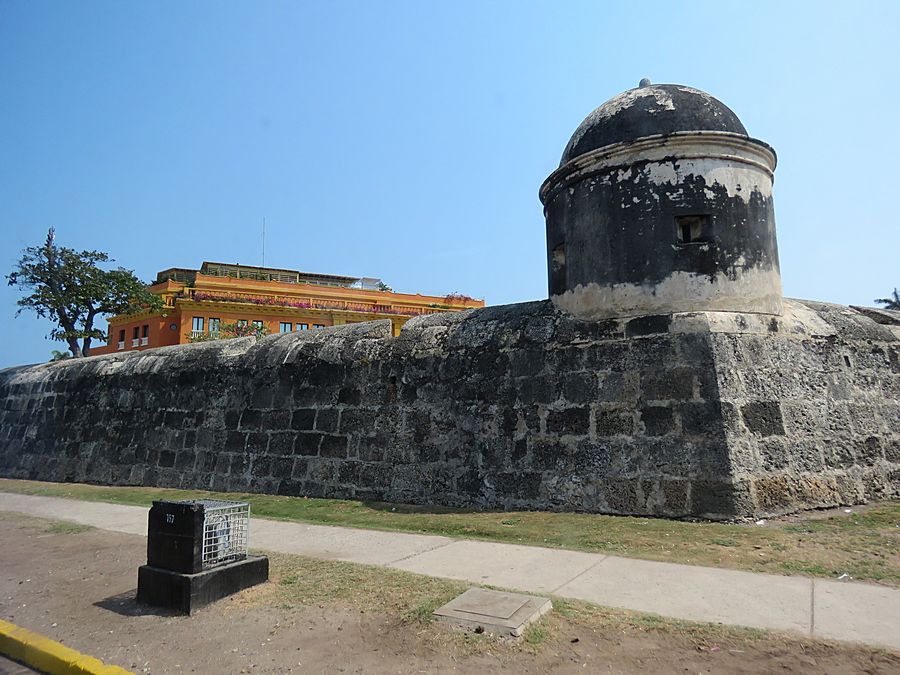
Cartagena was founded in 1533 on the northern coast.
Now much of the city is a UNESCO World Heritage Site.
The old town was protected by nearly 7 miles of fortified
walls, originally built by the Spaniards to keep pirates at bay.
The neighborhoods within the walls contain beautiful
restored 16th, 17th, and 18th century Spanish colonial
architecture.
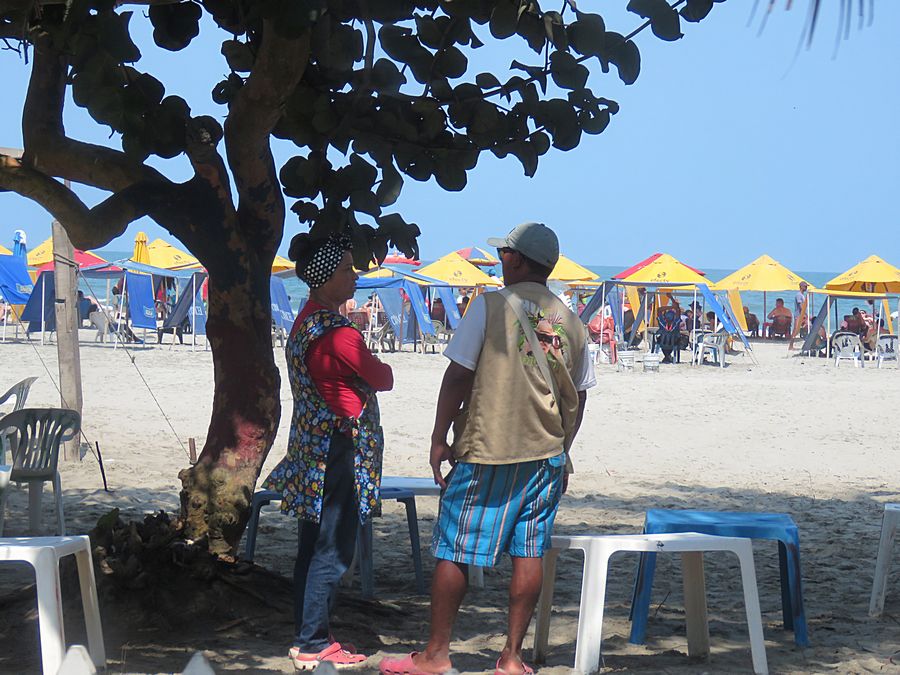
Many people come to Cartagena for the beaches.
Our focus was on the architecture, culture, history,
and interaction with the locals.

We visited an Emerald Museum and factory in
Cartagena. Colombia mines and produces the most emeralds
for the global market. It is estimated that Colombia accounts
for 70-90% of the world's emerald market.
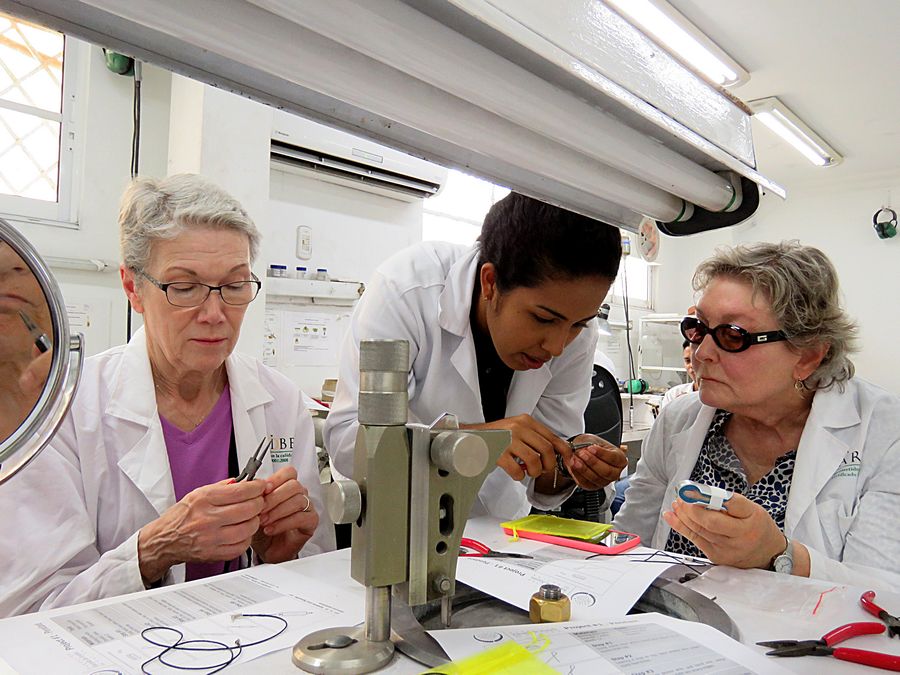
Worker helping us string a very, very small
emerald for a necklace.
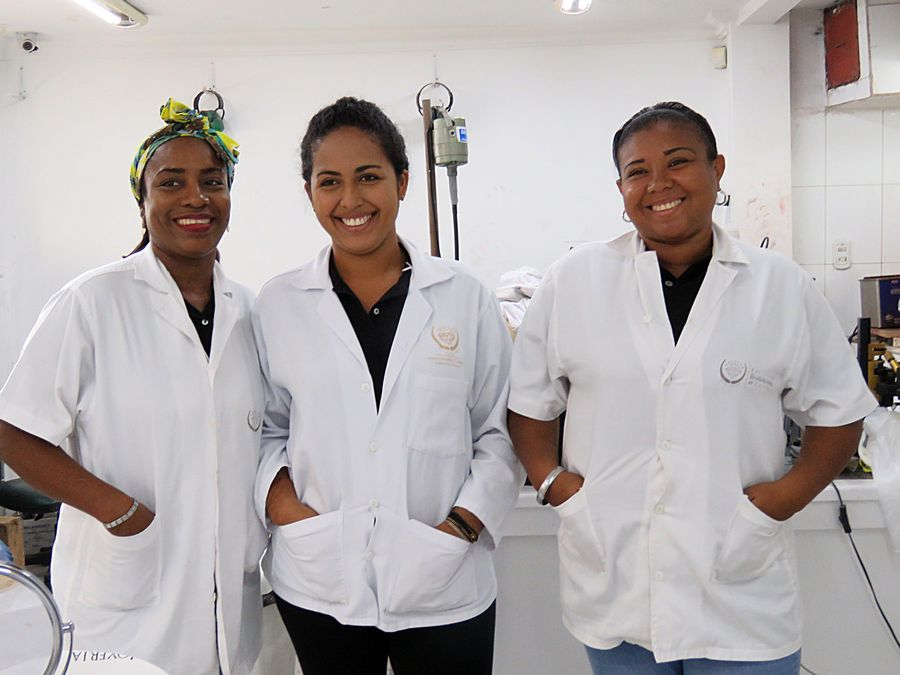
Workers at the Emerald Shop and Museum

Bantu Hotel, where we stayed in Old Town Cartagena,
is the one with the brown facade on the right. Typical
Old Town street with lots of flowers and narrow street.
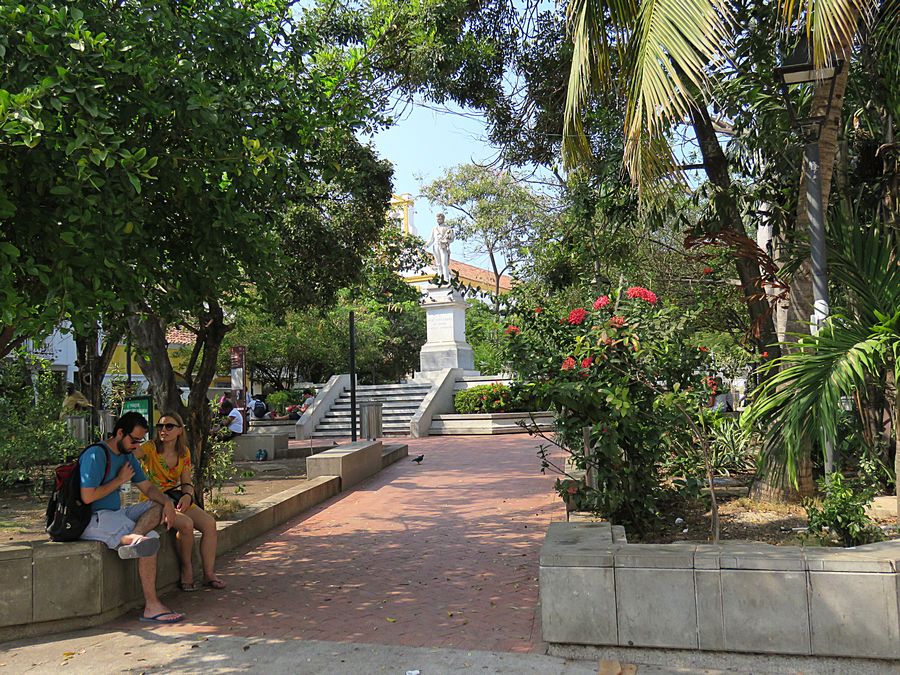
A Plaza surrounded by colonial buildings.
This was within a 2 minute walk from our hotel.
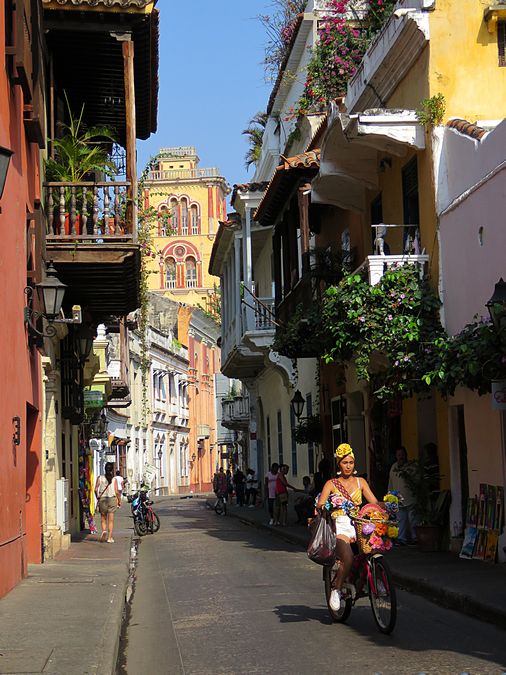
Another street scene in Cartagena
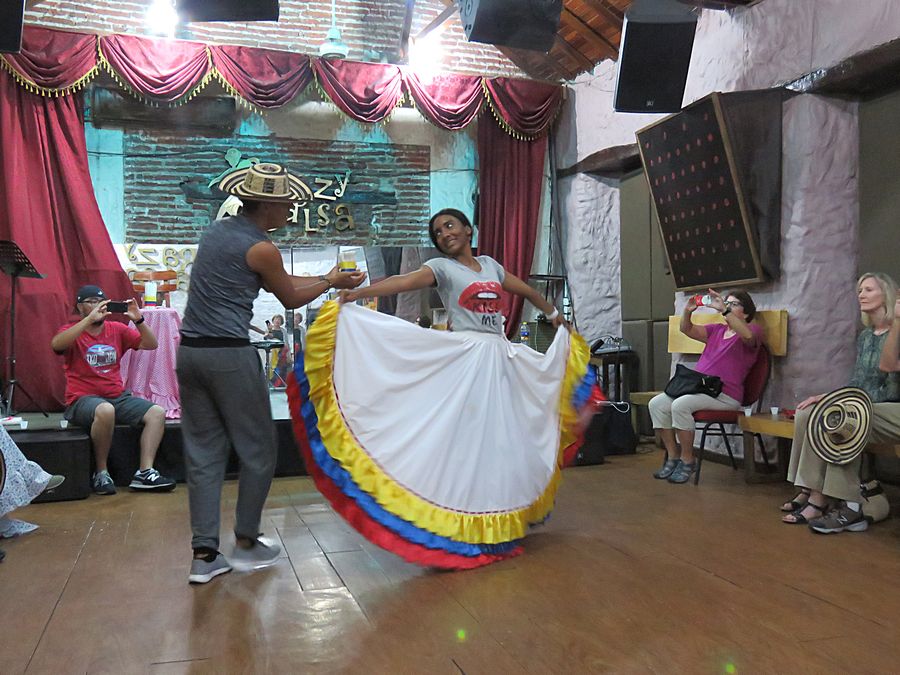
Cumbia, folkloric rhythm and dance from Colombia.
The Cumbia originated in Colombia's Caribbean coastal
region and Panama, from the musical and cultural fusion
of Native Colombians and Panamanians, slaves brought from Africa,
and the Spanish during colonial times. Two dancers showed us the
dance.
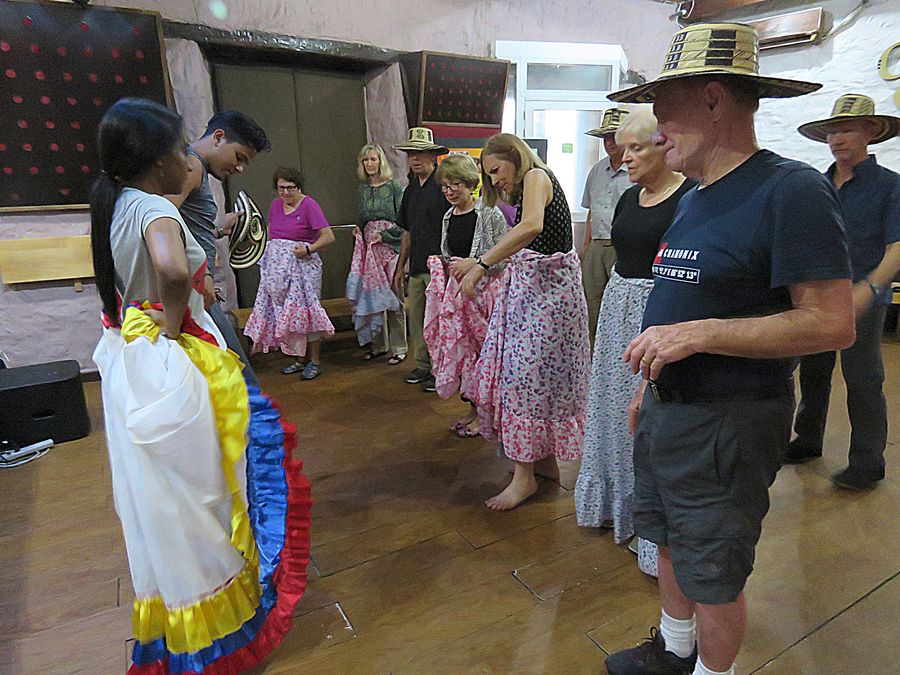
Here the pros are trying to show our group
the basics of Cumbia. We were pathetic, all of us.
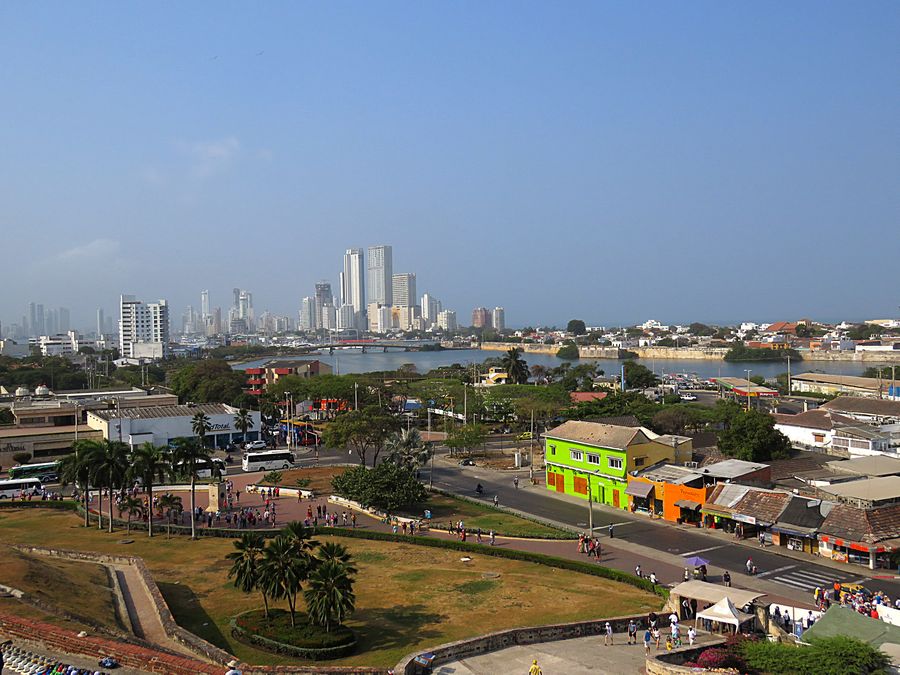
View from San Felipe Castle in Cartagena
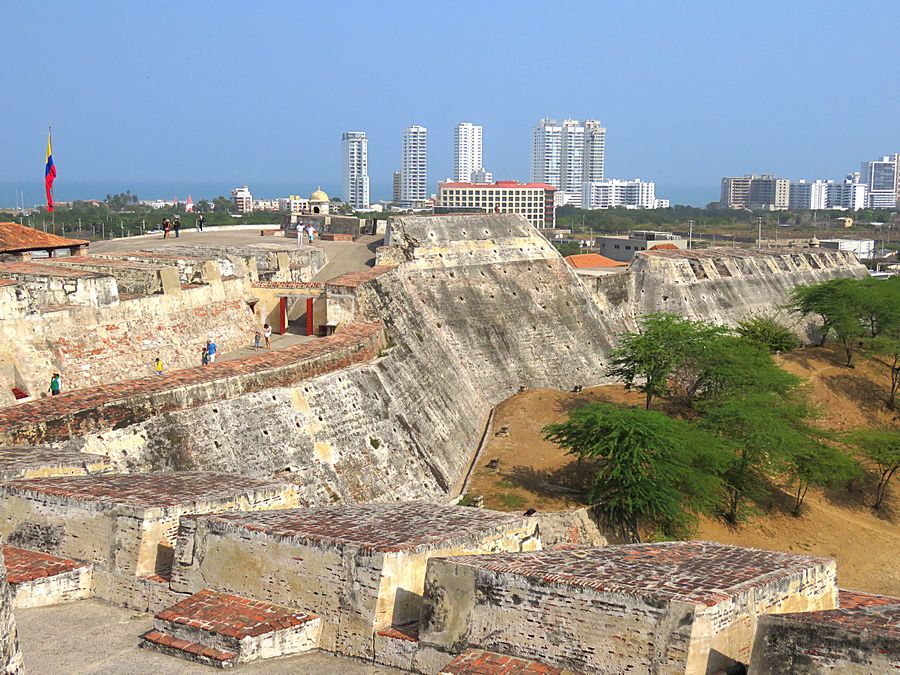
San Felipe Castle, a fortress in Cartagena,
located on San Lazaro Hill in a strategic location,
dominating approaches to the city by land or sea.
It was built by the Spanish during the colonial era.
Construction began in 1536.
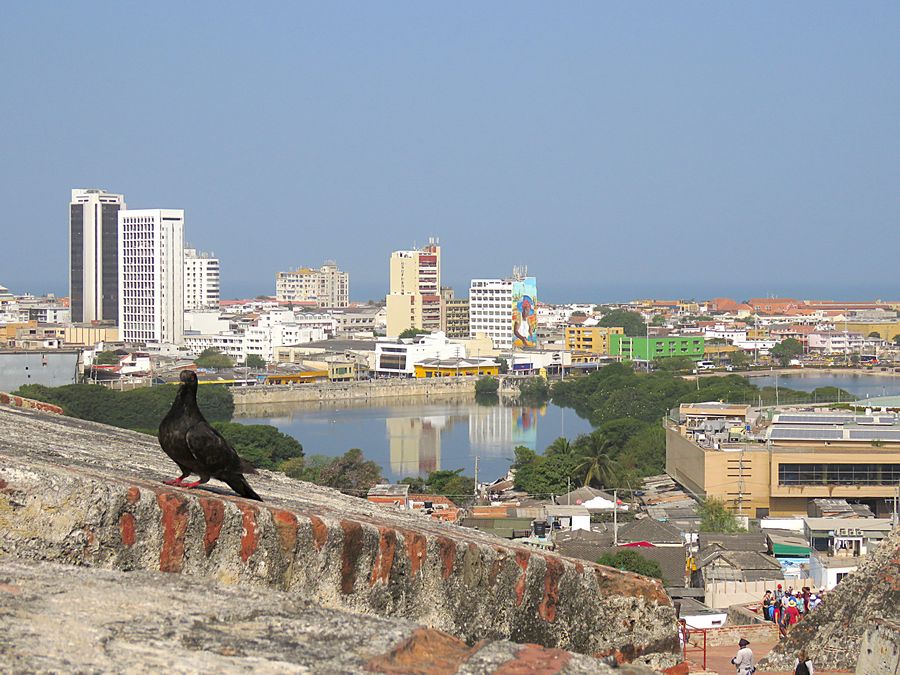
Another view of Cartagena from the castle,
with a pigeon in the foreground

Getsemani neighborhood in Cartagena
A few years ago you wouldn’t have wanted to visit Getsemani.
It was a hotbed for drug activity, prostitution, and crime. Now it is
a growing tourist area.

Trinidad Plaza
(Plaza de Santisma Trinidad)
in Getsemani. Street art, as
seen on the house behind the statues,
can be seen throughout the neighborhood.

Street scene in Getsemani

Another colorful street in Getsemani

Getsemani

On an exterior wall of a home in Getsemani.
So true.
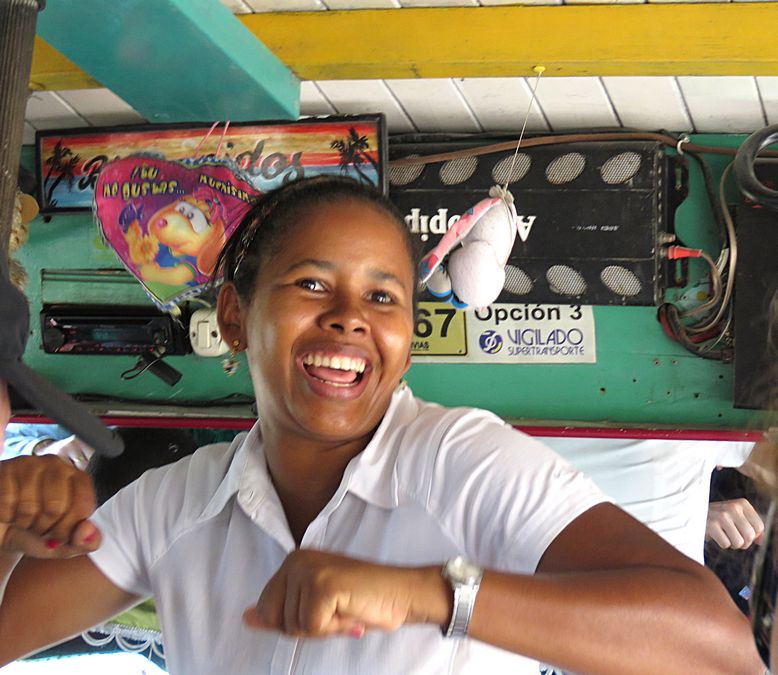
We rode on a chiva, a vibrantly painted bus,
while listening to live music performed by 3
musicians on the bus. Here our local guide is
dancing to the beat.
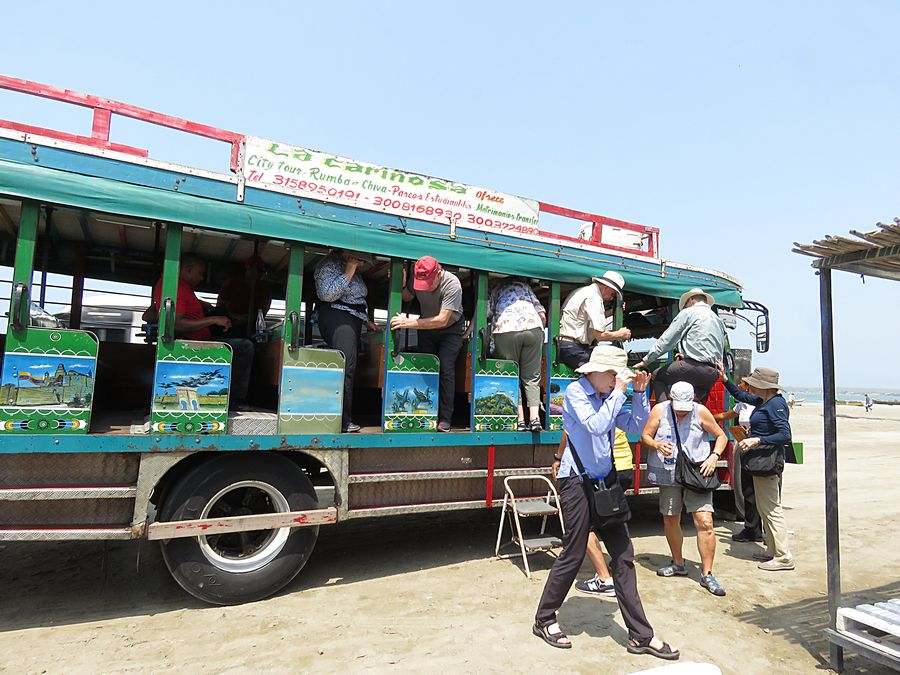
Getting off the chiva at La Boquilla, a
small fishing village north of Cartagena.
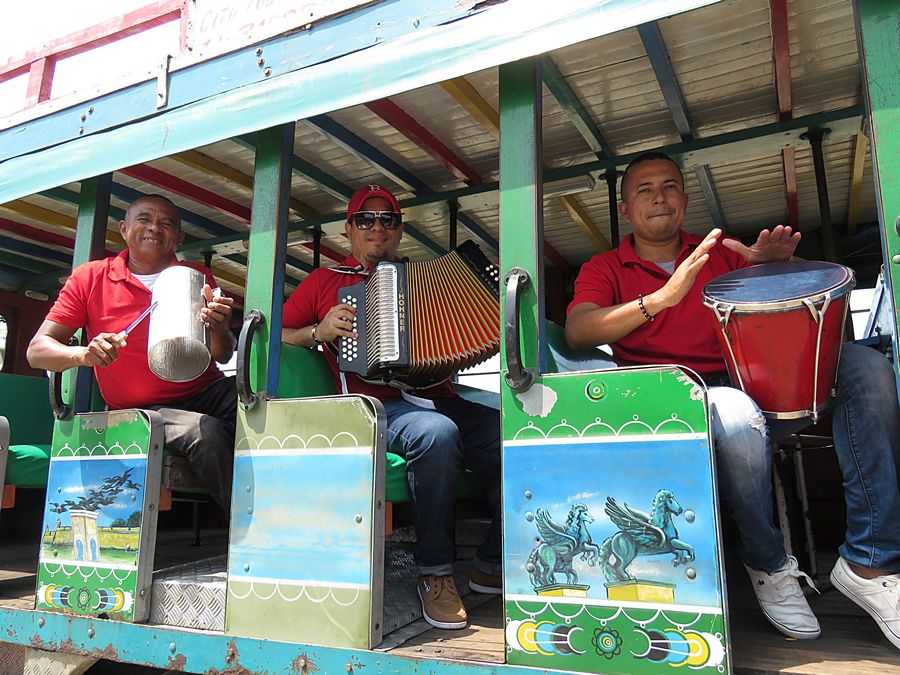
The musicians who performed for us on the chiva.
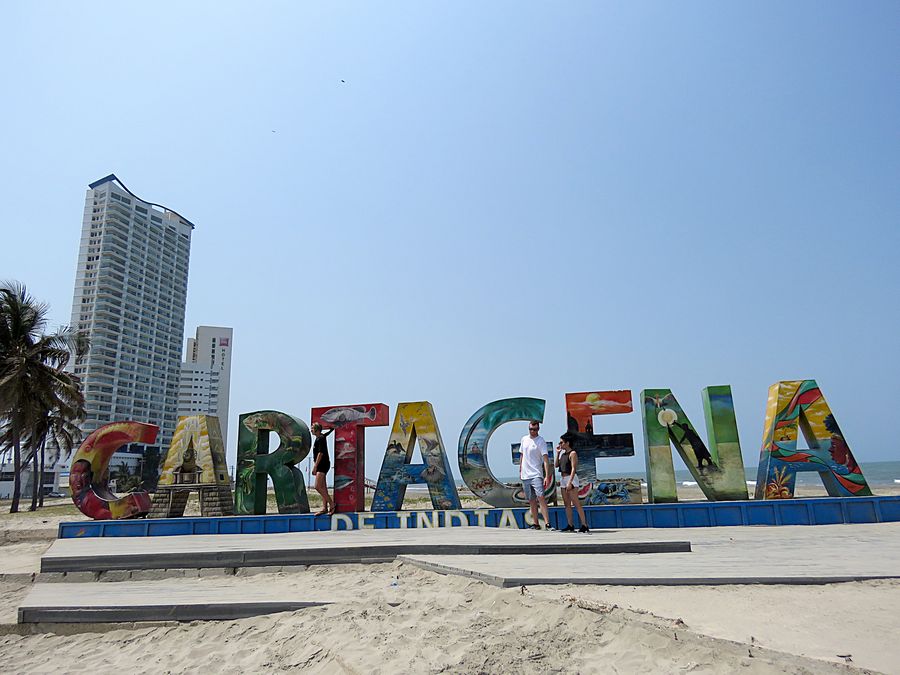
Large Cartagena sign on the beach with part of the
modern section of the City in the background.

Our last morning, we said goodbye to our toucan friend
and were transferred to the Cartagena Airport for our
flights home.
THE END
Link to Part One, Page One - Bolivia
Pat's Home Page